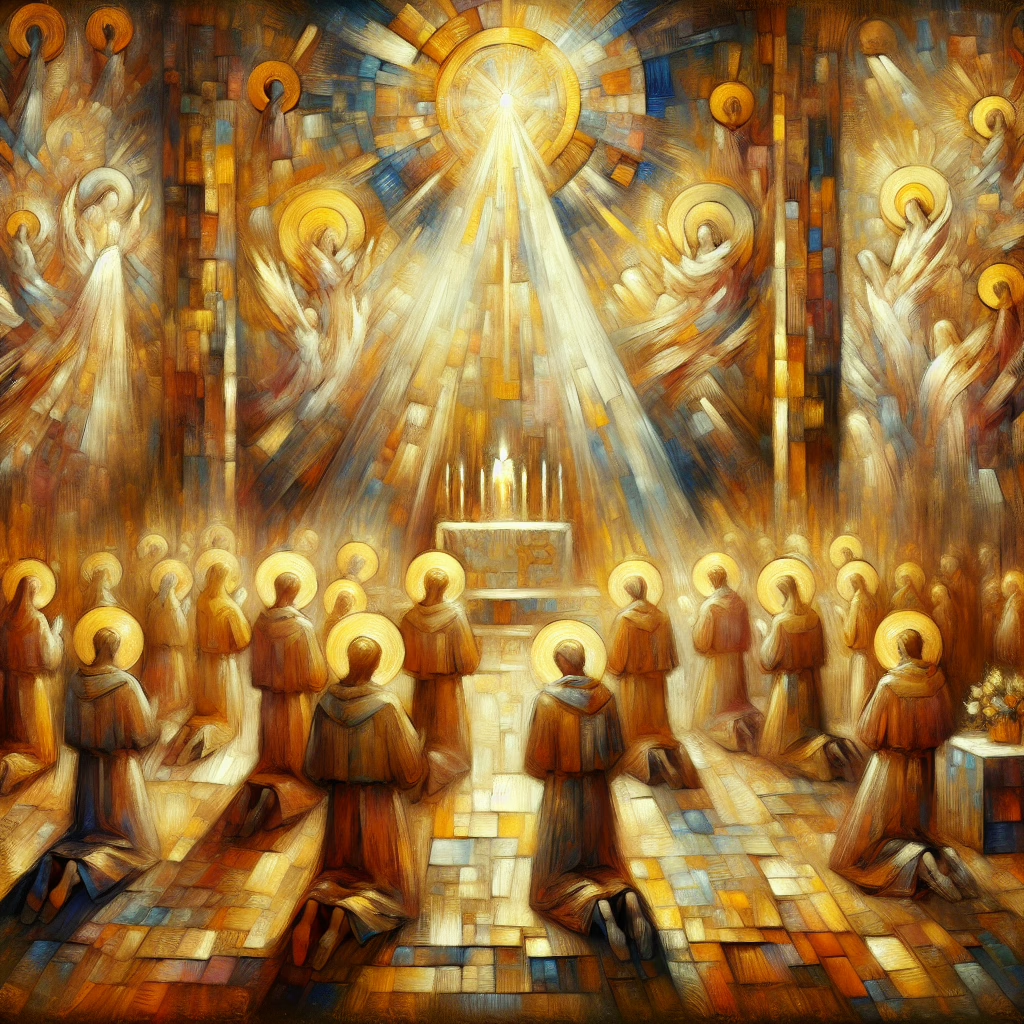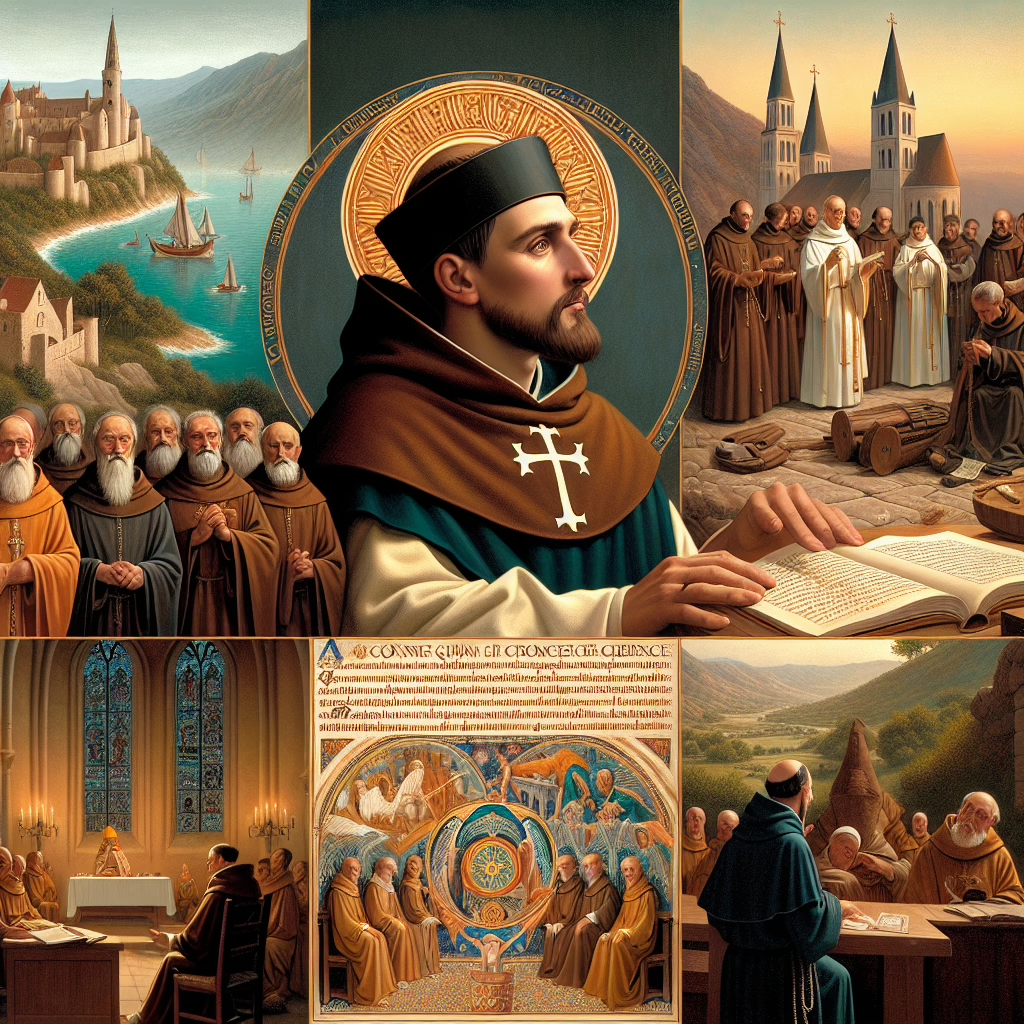Chair of Saint Peter, Apostle: The Legacy of Apostolic Authority
Introduction: Unveiling the Influence of Saint Peter
"You are Peter, and on this rock I will build my church" (Matthew 16:18) – few words carry such weight, carving a cornerstone for the edifice that is the Catholic Church. Saint Peter, regarded as the first Pope and Bishop of Rome, stands as a monumental figure, not just in religious history but as a pivotal anchor in spiritual leadership. The "Chair of Saint Peter" evokes imagery of apostolic authority—a symbol ensuring continuity and unity within the Church. Through his life, marked by miraculous events, enduring teachings, and resonant modern relevance, Saint Peter continues to shape Catholic faith and tradition.
1. Life and Significance of Saint Peter
1.1 Early Life and Apostolic Calling
Before the world knew him as Peter, the Apostle, he was Simon—a humble fisherman navigating the waters of the Sea of Galilee. Life seemed predetermined in its simplicity until the voice of Jesus echoed through the bustling marketplace: "Follow me, and I will make you fishers of men" (Matthew 4:19). It was a divine invitation to a profound transformation. Witnessing miracles like the Transfiguration, where Christ's divine nature was unveiled, solidified Peter's emerging role within the nascent Church.
1.2 Role in the Early Church
Saint Peter's leadership blossomed post-resurrection, shaping him into the bedrock of the early Christian community. A defining moment was his role in the Council of Jerusalem, where he courageously advocated for Gentile inclusion, breaking the molds of cultural and ethnic division. This pivotal decision underscored the universal reach of Christ's message, setting the stage for the Church's rapid expansion. The apostolic authority emanating from Peter's leadership was instrumental in navigating these foundational challenges.
2. Key Events and Miracles in Saint Peter's Life
2.1 Major Miracles Attributed to Saint Peter
Among his many acts of faith, the healing of Aeneas, a paralyzed man, stands noteworthy. Simply stating, "Aeneas, Jesus Christ heals you. Get up and make your bed" (Acts 9:32-35), led to a powerful manifestation of divine grace. Another remarkable episode occurred at the Temple gate, where Peter healed a crippled man, a testament to the living authority vested in him by Christ. As Pope Benedict XVI expressed, these miracles were "not simply external acts but expressions of faith" that affirmed Peter's leadership to the early believers.
2.2 The Martyrdom of Saint Peter
The culmination of Peter’s earthly journey was marked by martyrdom in Rome, a poignant testament to his unwavering devotion. His choice to be crucified upside down—deeming himself unworthy to die in the same manner as Christ—serves as a profound symbol of humility and sacrifice, eternally inspiring to all who walk the path of faith.
3. Teachings and Lessons from Saint Peter
3.1 Leadership and Authority
Saint Peter's teachings on leadership reflect a deep understanding of authority aligned with humility. The Catholic Church, through its structure of the papacy, embodies Peter's vision of servant leadership. This connection weaves his apostolic authority into the fabric of modern papacy, a links living through the Pope’s role today as a shepherd guiding the faithful.
3.2 Faith, Perseverance, and Vigilance
In his epistles, Peter addresses enduring trials with a steadfast spirit, urging the faithful to "be sober-minded and watchful" (1 Peter 4:7). His warnings against false teachers, articulated with palpable urgency, still resonate against contemporary challenges, reminding us of the vigilance required to preserve the core teachings of Christ.
4. Prayers and Devotions to Saint Peter
4.1 Traditional Practices
Intercessory prayers like the Litany of Saint Peter amplify our journey in faith, fostering deeper communal bonds. The prayer to Saint Peter, invoking his guidance and protection, is a cherished source of comfort and strength for Catholics worldwide.
4.2 Contemporary Devotional Practices
Reflecting on Peter’s epistles encourages a more profound connection with his teachings, particularly when celebrating the Feast of the Chair of Saint Peter on February 22. This feast honors the enduring role of Peter's legacy, advocating for devotion that resonates in the heart of every believer.
Conclusion: The Enduring Influence of the Chair of Saint Peter
Reflecting on Saint Peter's life, miracles, and teachings, we reaffirm his foundational role in shaping the Church. The "Chair of Saint Peter" emerges as a potent symbol of unity and authority within Catholic tradition, inviting all faithful to deepen their understanding of their faith through the Apostolic legacy left by Peter.
Engage with Peter’s journey, reflect on his teachings, and participate in prayers and celebrations honoring this central figure. In discovering and embracing the essence of his legacy, we are called to embody the values he championed—a commitment to faith, unity, and service.
Call-to-Action:
To explore more about Saint Peter and the influence of Apostolic Authority, consider delving into books that capture his life and teachings in greater detail. Here is a recommended read on Amazon:
- Book Title: Peter: Keys to Following Jesus
- Description: Timothy Gray explores the transformative journey of Saint Peter, highlighting how his story is integral to understanding the foundations of the Church and its ongoing mission.





